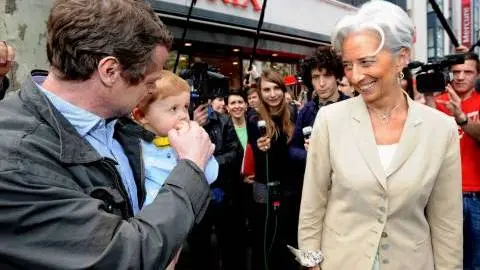How things can go wrong – or right – for the global economy
The global economic outlook hinges on whether we’re heading for a US recession, whether China can escape the current cycle of falling property prices and weak sentiment, and whether we see a cooling in geopolitical tensions. Here are two alternative scenarios for the global economy
The upside risk: Recession fears overblown
There are three obvious ways that our forecasts could be too pessimistic.
Firstly, the US economy continues to prove resilient despite the negative signals coming from some of the recent survey data. Healthy profit margins and corporate balance sheets allow the economy to shrug off the impact of past rate hikes. The unemployment rate falls back to or below 4%, undershooting the Federal Reserve’s year-end forecast of 4.4%. Labour supply growth stalls as the recent surge in migration ebbs away, but layoffs stay contained. The addition of extended/expanded tax cuts, which are likely if Trump wins the Presidency and a clean sweep in Congress, would add to the stronger growth/higher inflation narrative. The end of election uncertainty may also provide a short-lived boost to investment, regardless of who wins.
Secondly, China manages to return to annual growth rates in excess of 5%. That may be down to more aggressive government stimulus, be it fiscal or monetary, or if we begin to see the housing market turning a corner. Past measures successfully restore confidence in the market, which in turn boosts consumer activity via the wealth effect and improved sentiment.
Finally, the tensions in the Middle East subside – or at least stabilise – and/or the war in Ukraine peacefully ends earlier than many expect.
The combination of stronger global demand, especially from China, as well as calmer geopolitics and the possible anticipation of Ukrainian reconstruction, would be a boost for European (particularly German) industry.
All of this means that central banks can become more relaxed about growth. While they would likely continue to cut rates, recognising that a more neutral setting is still necessary, these cuts are likely to be slower than in our base case. The terminal rate also ends up higher than expected, as policymakers remain on their guard for the second-round effects of stronger growth on inflation. Depending on how far rates fall initially, that could even entail some very modest rate hikes in the second half of 2025. Either way, this scenario implies a terminal rate closer to 4% in the US and 3% in the eurozone.
The downside risk: Serious spike in oil prices causes widespread recession
The same three drivers that we’ve discussed above could just as easily become a source of downside risk, too.
Firstly, the recent US data turns out to have been massively overstating economic resilience. We already know that payrolls are set to be revised down, but so far only as far as March. More substantial revisions may eventually follow thereafter. This implies that the Sahm rule, which has been triggered by a half-a-percentage-point rise in the unemployment rate from its prior 12-month low, turns out to be a reliable recession signal after all.
Secondly, the risk is that the challenges in the Chinese property market continue to mount despite recent government stimulus. Sentiment remains weak. And local government finances, which were previously heavily reliant on land sales and real estate development, prove to be a major drag on economic activity.
But it’s oil that is undoubtedly the biggest “known unknown” in our global macro forecast. The risk, as our commodities team has detailed, is that material escalation in the Middle East, prompted by a blockade in the Strait of Hormuz, doubles oil prices.
The impact on inflation would be substantial. Headline CPI in the US/eurozone would increase by 1.5-2.0ppt due to gasoline costs alone, and by greater still once the indirect impact on food and other goods prices is accounted for. Both the US and eurozone slip into recession.
Consumer spending turns weaker in the major economies, and the challenges the manufacturing industry is already experiencing become magnified. Greater use of tariffs, depending on the US election winner, would add to those issues.
Central banks face a dilemma – look through the rise in oil prices and support demand, or keep rates elevated in order to balance second-round effects. Experience from the past couple of years suggests policymakers might opt for the latter. Rates fall back to neutral more quickly but don’t go materially “accommodative”.
However, that stance could quickly change assuming the recession in major economies causes widespread layoffs and a further spike in US/European unemployment rates. Higher central bank rates would become increasingly untenable and that ultimately forces a second wave of rate cuts into more expansionary territory and central banks switch focus to generating a recovery.
An unexpected recession, coupled with initially elevated central bank rates, could imply even greater scrutiny of government finances. Rate cuts would still herald some relief for debt interest costs, but any positive impact that has on deficits is offset by lower revenues/higher social spending. Government bond yields trade with a greater fiscal risk premium, potentially implying wider spreads in Europe. That would add another layer of difficulty for the eurozone economy.
This publication has been prepared by ING solely for information purposes irrespective of a particular user's means, financial situation or investment objectives. The information does not constitute investment recommendation, and nor is it investment, legal or tax advice or an offer or solicitation to purchase or sell any financial instrument. Read more
Download
Download article
10 October 2024
ING Monthly: Central bankers left holding the baby This bundle contains 14 Articles
